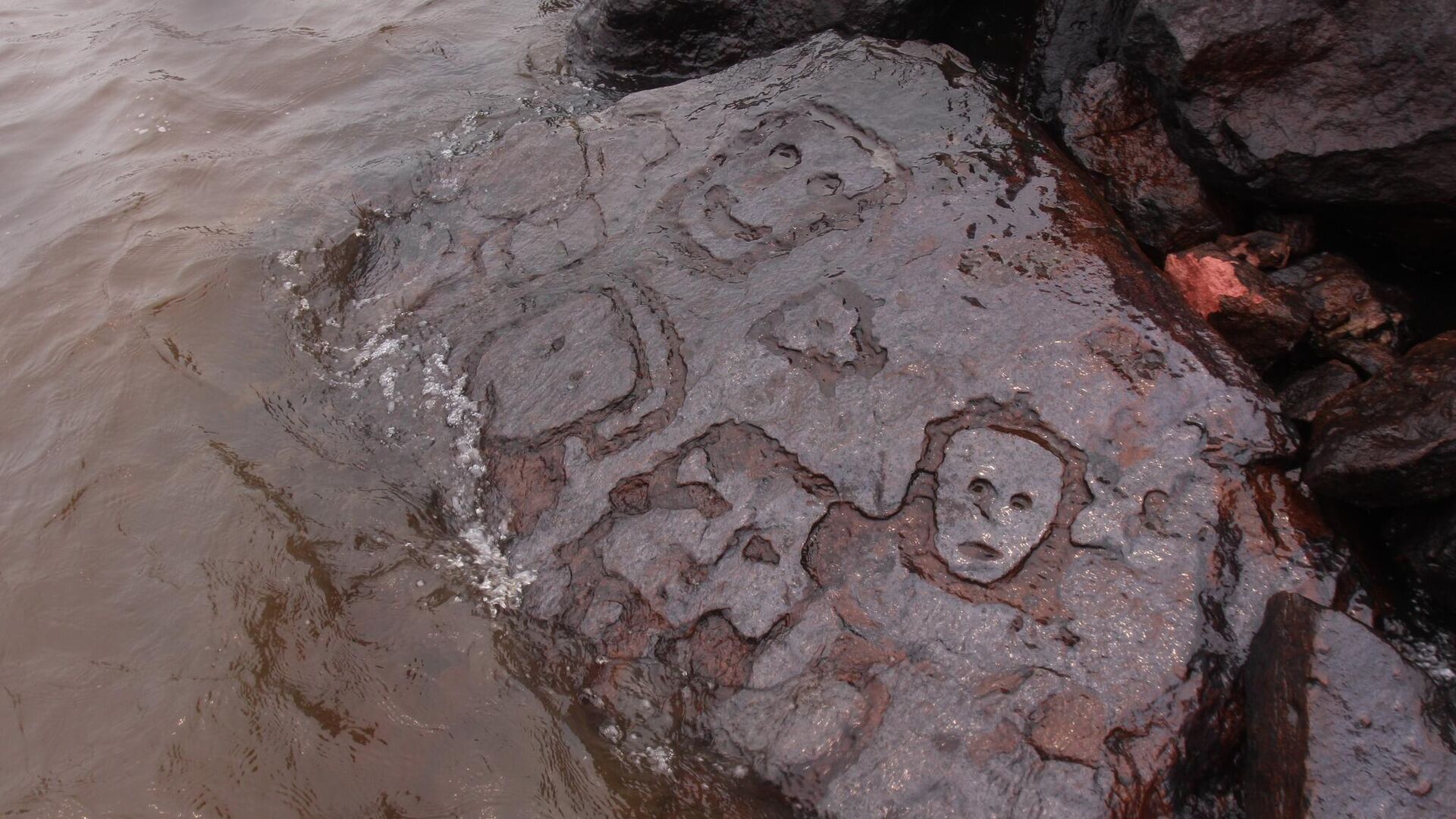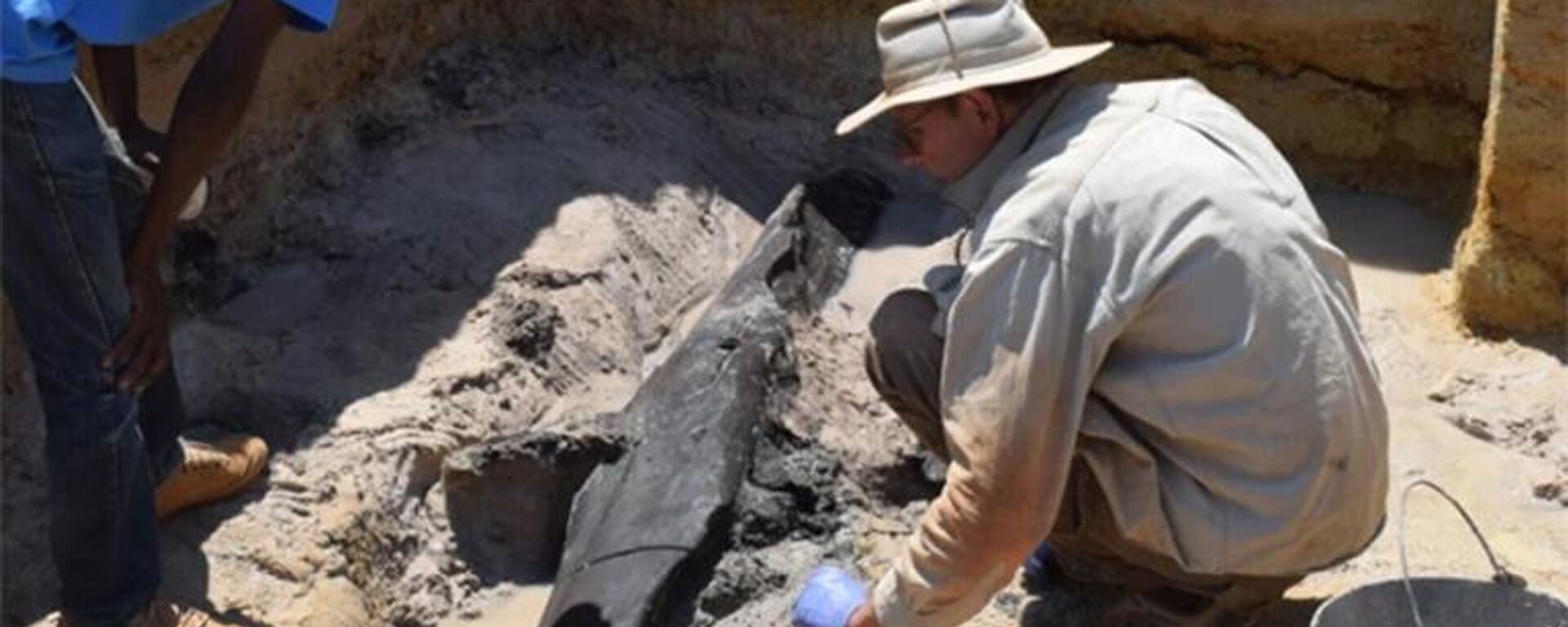https://en.sputniknews.africa/20231021/ancient-emoji-uncovered-by-brazilian-jungle-drought-1062973593.html
Ancient 'Emoji' Uncovered by Brazilian Jungle Drought
Ancient 'Emoji' Uncovered by Brazilian Jungle Drought
Sputnik Africa
A major drought in the state of Amazonas has caused water levels in the Rio Negro River, a major tributary of the Amazon, to be at their lowest levels since... 21.10.2023, Sputnik Africa
2023-10-21T14:53+0200
2023-10-21T14:53+0200
2024-04-25T10:22+0200
brazil
latin america
international
viral news
culture
archeology
history
https://cdn1.img.sputniknews.africa/img/07e7/0a/15/1062975213_0:107:2048:1259_1920x0_80_0_0_13084a23b56c5f59231cf2d90327c37a.jpg
A severe drought in Brazil's jungle city of Manaus has caused the level of the Rio Negro river to fall and brought out some eerie artwork sculpted onto the rocks, local media reported.The engravings were dubbed "Caretas," which roughly translates to "little faces". Some faces are slightly square, and none of them has more than a head, a mouth, and sometimes a nose.Some of the figures are reportedly still submerged in the rocky clump, but are expected to become visible soon if the Rio Negro continues to recede. During the 2010 drought, the lower gravels were only visible for one day and then came back underwater when the river level rose again.According to experts, it is impossible to say how the artworks were made and whether it was during a time of severe drought or if the river level more than 1,000 years ago was lower than it is today.The archaeologists noted that the "emojis" bear a striking similarity in style to other images of heads engraved along several river outcrops in the central Amazon region. They pointed out that these rock art sites also share a common feature: they are only visible during periods that the river is drying and are often close to ancient pre-colonial indigenous communities.Archaeologist Jaime Oliveira called the work "complex graphic art" and believes it was made with axes made from hewn stone.
https://en.sputniknews.africa/20230921/hominins-worked-with-wood-half-a-million-years-old-wooden-construction-found-in-zambia-1062257647.html
brazil
latin america
Sputnik Africa
feedback@sputniknews.com
+74956456601
MIA „Rossiya Segodnya“
2023
Maxim Grishenkin
https://cdn1.img.sputniknews.africa/img/07e7/0a/17/1063018107_0:0:1104:1103_100x100_80_0_0_03090c85a11f5d2e8a19cf1d989443c9.jpg
Maxim Grishenkin
https://cdn1.img.sputniknews.africa/img/07e7/0a/17/1063018107_0:0:1104:1103_100x100_80_0_0_03090c85a11f5d2e8a19cf1d989443c9.jpg
News
en_EN
Sputnik Africa
feedback@sputniknews.com
+74956456601
MIA „Rossiya Segodnya“
Sputnik Africa
feedback@sputniknews.com
+74956456601
MIA „Rossiya Segodnya“
Maxim Grishenkin
https://cdn1.img.sputniknews.africa/img/07e7/0a/17/1063018107_0:0:1104:1103_100x100_80_0_0_03090c85a11f5d2e8a19cf1d989443c9.jpg
brazil, latin america, international, viral news, culture, archeology, history
brazil, latin america, international, viral news, culture, archeology, history
Ancient 'Emoji' Uncovered by Brazilian Jungle Drought
14:53 21.10.2023 (Updated: 10:22 25.04.2024) A major drought in the state of Amazonas has caused water levels in the Rio Negro River, a major tributary of the Amazon, to be at their lowest levels since 1902, Brazil's Geological Survey said.
A severe drought in Brazil's jungle city of Manaus has caused the level of the Rio Negro river to fall and brought out some eerie artwork sculpted onto the rocks, local media reported.
The engravings were dubbed "Caretas," which roughly translates to "little faces". Some faces are slightly square, and none of them has more than a head, a mouth, and sometimes a nose.
Some of the figures are reportedly still submerged in the rocky clump, but are expected to become visible soon if the Rio Negro continues to recede. During the 2010 drought, the lower gravels
were only visible for one day and then came back underwater when the river level rose again.
Experts estimated the age of the petroglyphs, which depict human faces, to be between 1,000 and 2,000 years old.
According to experts, it is impossible to say how the artworks were made and whether it was during a time of severe drought or if the river level more than 1,000 years ago was lower than it is today.
The archaeologists noted that the "emojis" bear a striking similarity in style to other images of heads engraved along several river outcrops in the central Amazon region.
They pointed out that these rock art sites also share a common feature: they are only visible during periods that the river is drying and are often close to ancient pre-colonial indigenous communities.
Archaeologist Jaime Oliveira called the work "complex graphic art" and believes
it was made with axes made from hewn stone.



